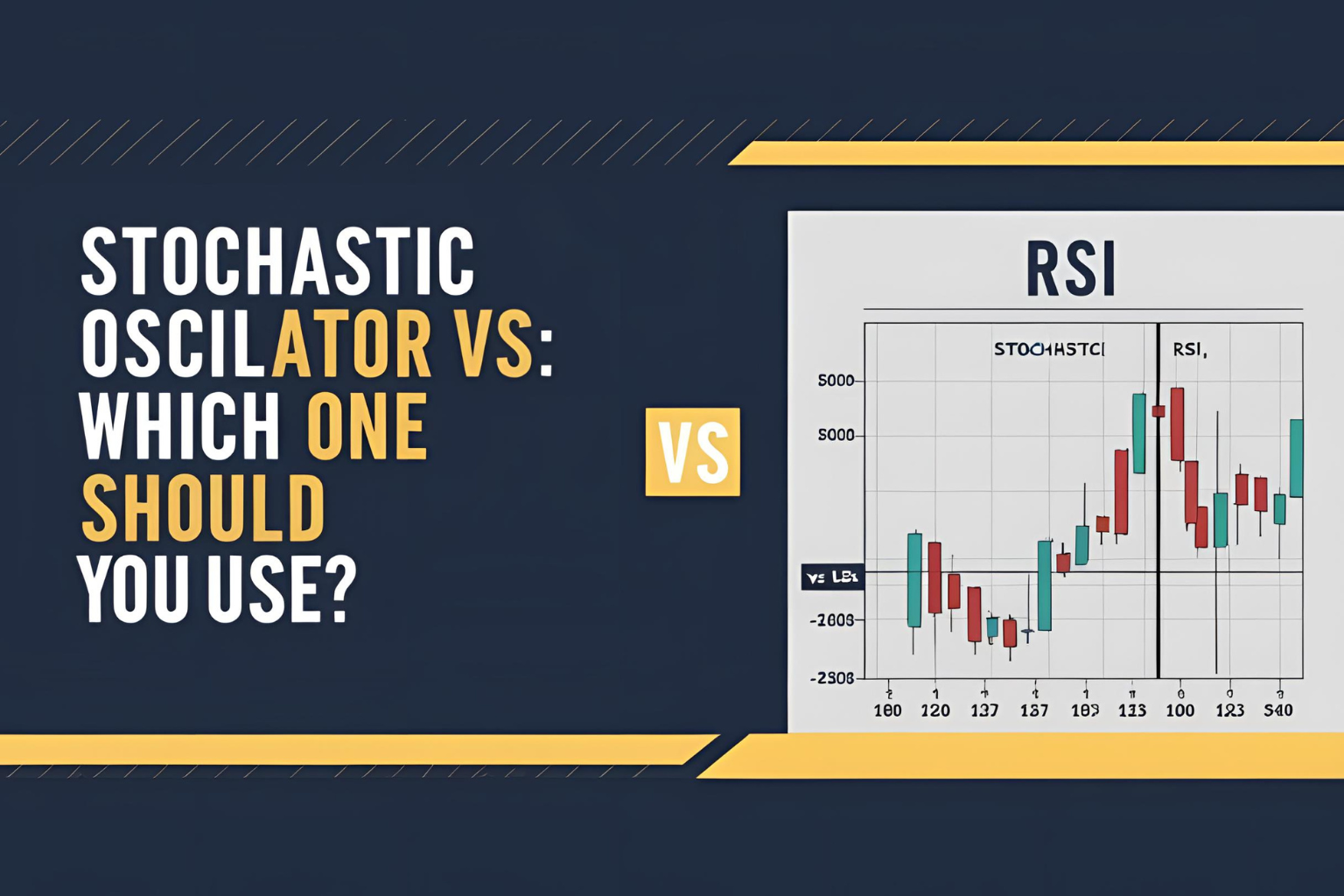Stochastic Oscillator vs RSI: Which One Should You Use?
Introduction
When it comes to momentum indicators, two names stand out: the stochastic oscillator and the Relative Strength Index (RSI). Both are widely used to identify overbought and oversold market conditions—but they work differently and serve slightly different purposes. In this post, we’ll compare stochastic oscillator vs RSI to help you decide which is better for your trading strategy.
What Is the Stochastic Oscillator?
The stochastic oscillator compares the current closing price to its price range over a set number of periods—typically 14. It generates signals through crossovers of two lines: %K and %D. It’s ideal for detecting momentum reversals within a defined range.
- Overbought: Above 80
- Oversold: Below 20
What Is RSI?
The Relative Strength Index (RSI) measures the speed and change of price movements. It is plotted on a scale of 0 to 100 and is commonly used to spot potential reversal zones based on recent gains vs losses.
- Overbought: Above 70
- Oversold: Below 30
RSI has a single line, unlike the stochastic oscillator.
Key Differences Between Stochastic and RSI
| Feature | Stochastic Oscillator | RSI |
|---|---|---|
| Output Lines | %K and %D (2 lines) | 1 line |
| Speed | More sensitive | Smoother, slower |
| Best Use Case | Range-bound markets | Trending markets |
| Common Thresholds | 20 / 80 | 30 / 70 |
| Signals | Crossovers and divergence | Divergence and level tests |
| Whipsaws | More frequent | Less frequent |
Which One Should You Use?
- Use Stochastic if you’re looking for faster signals and trade in sideways markets.
- Use RSI if you want smoother signals and trade in trending markets.
- Some traders combine both to filter signals more effectively.
Example: If both RSI and stochastic show overbought levels, the probability of a reversal is higher.
Combining RSI and Stochastic
Using both indicators can improve accuracy:
- Wait for both indicators to confirm overbought or oversold levels.
- Use stochastic crossovers as triggers and RSI as confirmation.
This dual-confirmation method reduces false entries and improves timing.
Conclusion
There’s no one-size-fits-all answer in the stochastic oscillator vs RSI debate. Both indicators are powerful on their own but even better when used together. Choose the one that fits your strategy, or combine them for better confirmation in your trades.
FAQs
Q1. Is stochastic faster than RSI?
Yes, stochastic is more sensitive and generates quicker signals than RSI.
Q2. Can I use both stochastic and RSI together?
Absolutely. Many traders use both for double confirmation of reversals.
Q3. Which indicator is better for trending markets?
RSI is generally more reliable in strong trending markets.
Q4. Do stochastic and RSI always agree?
No. They may provide conflicting signals, which is why context matters.
Q5. Is RSI more accurate than stochastic?
Not necessarily. RSI is smoother, but stochastic can give earlier signals.

